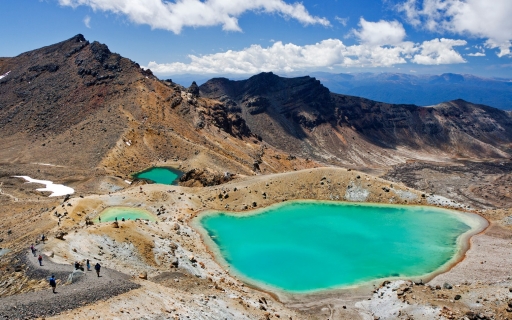Whakapapa Village Temperatures: Monthly Averages and Year-Round Insights
On this page, we’ll explore Whakapapa Village’s temperature statistics in detail, including day and night variations and monthly averages. We’ll also compare the annual temperature to other cities in New Zealand.
Monthly Temperature Averages
Depending on the time of the year, temperatures range from pleasant to cold in Whakapapa Village. Typically, maximum daytime temperatures range from a pleasant 20°C in February to a cold 9°C in the coolest month, July. Nights are cooler, with temperatures generally dropping to 1°C, particularly during the colder months.
The chart below illustrates the average maximum day and minimum night temperatures in Whakapapa Village by month:
The early hours of 4 AM to 6 AM often see the lowest temperatures, while 3 PM marks the peak of the day’s heat as the sun’s impact is strongest. February, the city’s warmest month, boasts 205 hours of sunshine.
The chart below shows the average temperature throughout the year:
July, the city’s coldest month, sees about 171 mm of rainfall spread over roughly 21 days. It records 120 hours of sunshine of sunshine.
Annual Temperatures in New Zealand Compared
The map below shows the annual temperature across New Zealand. You can also select the different months in case you are interested in a specific month.
 very warm
very warm
 warm
warm
 pleasant
pleasant
 moderate
moderate
 cold
cold
 very cold
very cold
Whakapapa Village Temperatures Compared World Wide
Whakapapa Village’s average annual maximum temperature is 14°C. Let’s compare this with some popular tourist destinations:
Seville, Spain, stands out with its warm Mediterranean climate and an average annual temperature of 23°C.
In contrast, in ReykjavĂk, Iceland, the average annual temperature is significantly lower at 9°C, with mild summers and cold winters.
Meanwhile, Buenos Aires, Argentina, enjoys a humid subtropical climate with an average annual temperature of 23°C, featuring hot summers and mild winters.
Perth, Australia, experiences a Mediterranean climate, with a pleasant average temperature of 25°C.
How are these Temperatures Measured?
Generally, temperature data depicting climate is usually given over a 30-year average in order to reduce short-term fluctuations and reveal better long-term trends in climate conditions.
This temperature data is taken from land-based thermometers, ocean buoys, ships, and satellites. These measurements are transmitted to weather stations and climate centers around the globe where they are processed, averaged, and analyzed in order to monitor the trends and create climate models.
Effects of Temperature on Weather and Climate
Temperature variations influence precipitation patterns in Amsterdam:
Rainfall: Warm air holds more moisture, leading to heavier rain during warmer months. However, precipitation is generally moderate year-round.
Snow: Occasional snowfall occurs in winter, though it rarely lasts very long.
For more detailed information about Whakapapa Village’s weather, including monthly rainfall, sunshine hours, and humidity levels, visit our Whakapapa Village climate page.
Current temperature in Whakapapa Village
broken clouds and chance of slight rain
partly cloudy and no rain
clear and no rain




